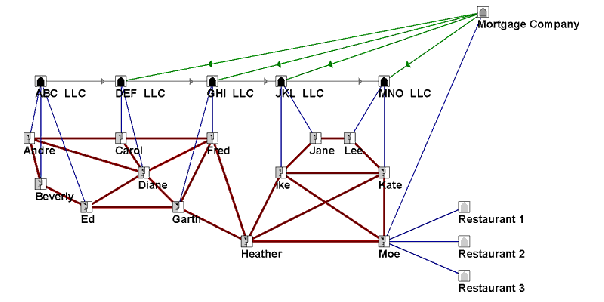
Supreme Court Sidesteps Digital Privacy … For Now
[Source: GigaOm, by Derrick Harris, January 24, 2012]
 On Monday, the Supreme Court deemed it unconstitutional in most cases to use GPS to track suspects without first obtaining a warrant — calling the attachment of a GPS device to a suspect’s property a trespass — but the Court declined to address some major privacy issues also at play in the case. As I explained back in November, the case, United States v. Jones, was technically about GPS tracking but potentially could have major implications with regard to how much digital data law enforcement agencies are able to collect and analyze without a search warrant.
On Monday, the Supreme Court deemed it unconstitutional in most cases to use GPS to track suspects without first obtaining a warrant — calling the attachment of a GPS device to a suspect’s property a trespass — but the Court declined to address some major privacy issues also at play in the case. As I explained back in November, the case, United States v. Jones, was technically about GPS tracking but potentially could have major implications with regard to how much digital data law enforcement agencies are able to collect and analyze without a search warrant.Here are three big questions the Court didn’t answer, but that seem to be weighing heavily on several Justices’ minds and might just arise again in future cases:
1. How much data is too much?
In concurring with the majority opinion, Justice Samuel Alito (along with three other justices) was quick to point out that while he agreed with the outcome, the majority missed the point almost entirely. One of his biggest concerns is that it’s not the physical trespass that’s troubling, but the amount of information gathered over a long time: “[T]he Court’s reasoning largely disregards what is really important (the use of a GPS for the purpose of long-term tracking) and instead attaches great significance to something that most would view as relatively minor ….”
Alito calls it an “incongruous result” that using GPS to track someone even briefly would violate the Fourth Amendment, but tracking someone for four weeks using aerial surveillance and unmarked cars would not. And, as he points out, it’s easier than ever to obtain location information about suspects using new means such as in-car GPS units (e.g., OnStar) or GPS data collected by wireless providers. In most cases, he seems to think, a brief glance at data is fine — even if it involves installing a GPS device — but a long-term operation is not.
Justice Sonia Sotomayor offered her own concurring opinion in which she expanded Alito’s concerns about the length of surveillance to include the amount of information that surveillance produces. “In cases involving even short-term monitoring, some unique attributes of GPS surveillance … will require particular attention,” she wrote. “GPS monitoring generates a precise, comprehensive record of a person’s public movements that reflects a wealth of detail about her familial, political, professional, religious, and sexual associations…. The Government can store such records and efficiently mine them for information years into the future.”
2. What do citizens really “disclose”?
Sotomayor also seized upon Alito’s concern over the relative ease with which authorities might obtain warrantless location data from other sources, such as wireless providers. She called the so-called third-party doctrine “ill suited to the digital age, in which people reveal a great deal of information about themselves to third parties in the course of carrying out mundane tasks.” Think of all the information our ISPs, wireless providers, online retailers and social-media platforms have about us.
In calling for the reconsideration of this doctrine to comport with the 21st-century way of life, Sotomayor questioned whether secrecy is still a necessary prerequisite for constitutional privacy. “I would not assume that all information voluntarily disclosed to some member of the public for a limited purpose is, for that reason alone, disentitled to Fourth Amendment protection,” she wrote.
3. When is data greater than the sum of its parts?
The underlying theme of all this discussion, as both Alito and Sotomayor point out, is the relative ease with which authorities might now obtain and analyze all this information about citizens. “In the pre-computer age,” Alito noted, “the greatest protections of privacy were neither constitutional nor statutory, but practical.”
Now, however, authorities could obtain location data, call records, online purchases, certain emails, lists of social media acquaintances, you name it, all without a warrant. Add in high-powered, sometimes low-cost big data tools for storing and analyzing that data, and suddenly, the police might be able to piece together a story that wouldn’t be obvious from looking at any of that information with the naked eye. For an example of what’s possible even without subpoenaing personal records, look at how one city attorney used publicly available information to create a social network map that helped convict a handful of slumlords.

The Court or Congress might never place limitations on what data authorities can use or the techniques authorities can use to analyze it, but the Justices’ acknowledgement of technical advances means they might be willing to limit how easily certain data can be accessed.
Feature image courtesy of Flickr user nrkbeta; social map courtesy of Orgnet.com.


